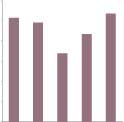Holding water
 Shahdol: A thousand tanks now
Shahdol: A thousand tanks now
Shahdol literally means one thousand tanks in Hindi. Of its 2,772 tanks, 584 have been renovated in the past 15 months and have enough water to irrigate 3,000 hectares or quench the thirst of 400 villages and their large livestock population, thanks to the tank renovation programme to fight water scarcity. The district already had a programme on tank restoration when the Madhya Pradesh chief minister gave a call for the Ek Panch Ek Talaab programme.
The use of groundwater had been increasing gradually, resulting in water scarcity. In the post-monsoon period, people used to migrate to urban areas in search of jobs. Traditional water harvesting structures fell to disuse. "It reduced recharge of the groundwater,' says Nagendra Mishra, additional chief executive officer of the Shahdol District Rural Development Agency ( drda ).
In May 1999, the district began renovating old tanks with the community contributing 50 per cent of the cost. It set a target of 10 tanks in each block during May and June. The rural engineering department identified the traditional tanks and helped the community estimate the cost. By June, some 137 tanks were renovated and a final quality test was done on them. "Surprisingly, we didn't find a single structure with any major fault. This convinced our officials that if the community is involved then the job is going to be up to the mark,' says Sanjay Dubey, chief executive officer of drda . Though the 2000 monsoon was erratic and below average, most of the tanks got filled with water. When the Ek Panch Ek Talaab programme was launched in April 2000 the district took readily to it.
During April and May of 2000, renovation of 586 tanks was taken up. "By June 2000 it was clear that the monsoon was not going to be normal. People came out in full support of the programme,' says Nagendra Yadav, member of Shahdol Zilla Panchayat (district council). After the monsoon failed, the district authorities lowered the community's share from 50 per cent to 20 per cent. By November 2000, Rs 2.8 crore had been spent on the programme
Related Content
- State of global environmental governance 2023
- Order of the National Green Tribunal regarding disposal of waste into Katahal storm water drain joining river Ganga, Ballia district, Uttar Pradesh, 13/09/2023
- Report by the District Mineral Officer, Baramulla on gypsum mining affecting the health of villagers, 11/09/2023
- Report on the holding of night market beside Jal Mahal lake a part of Nahargarh Wildlife Sanctuary and Eco-Sensitive Zone, Jaipur, Rajasthan, 19/08/2023
- Report on water neutrality for Indian Industry: standardization of the definition and approach
- Order of the National Green Tribunal regarding discharge of sewage and solid waste into Katahal drain connected to river Ganga in Ballia, Uttar Pradesh, 12/04/2023
